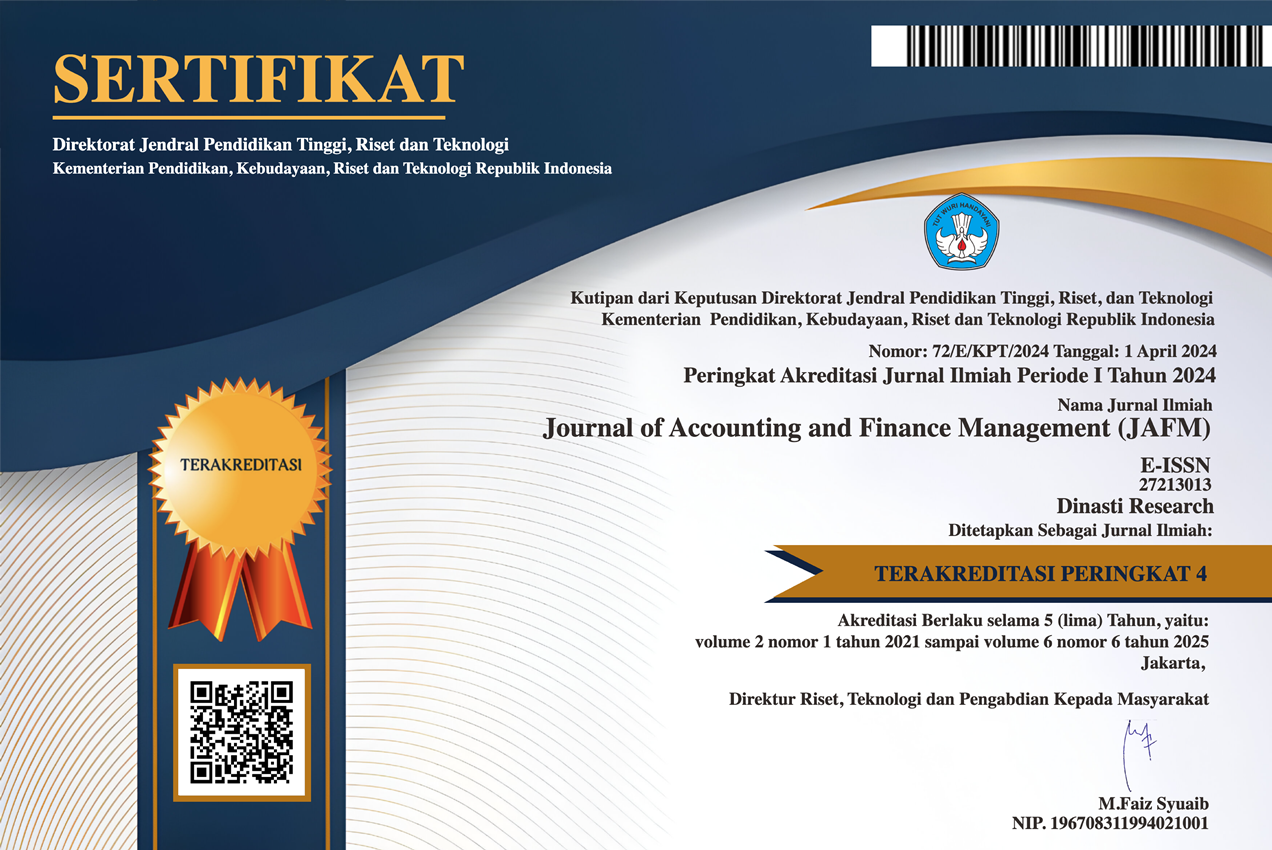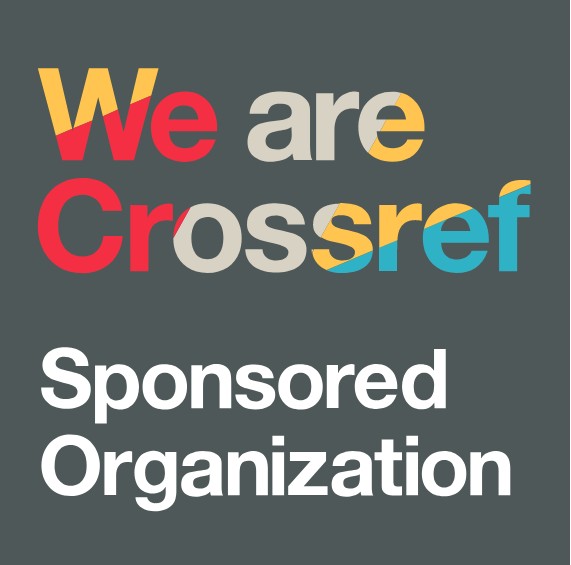Kajian Relevansi Teori Fraud Dengan Teori Kriminologi
DOI:
https://doi.org/10.38035/jafm.v6i4.2408Keywords:
Kecurangan, Kriminologi, Tekanan, Peluang, Rasionalisasi, KapasitasAbstract
Biasanya, tujuan orang melakukan fraud adalah untuk mendapatkan keuntungan pribadi yang akan berdampak menimbulkan kerugian pada pihak lain. Hal ini merupakan fenomena yang tidak asing lagi dilingkungan kita. Perbuatan fraud saat ini dilihat sebagai suatu kejahatan dan termasuk klasifikasi sebagai suatu tindakan pidana. Hal ini didukung oleh teori-teori kriminologi yang ada. Sementara itu di riset-riset audit dan akuntansi terdapat dua teori yang berkembang yang membahas penyebab tindakan fraud yaitu Teori Segitiga Kecurangan dan Teori Berlian Kecurangan. Pada sisi ilmu kriminologi juga terdapat beberapa teori yang menjelaskan terjadinya suatu kejahatan, dimana teori-teori kriminologi ini mengauatkan teori-teori penyebab fraud. Adapun teori-teori kriminologi tersebut antara lain adalah Teori Asosiasi Diferential, Teori Ketegangan, Teori Pengendalian Sosial dan banyak lagi. Artikel ini menghubungkan teori-teori penyebab fraud dengan teori-teori kriminologi untuk mendapatkan gambaran atas faktor penyebab tindakan fraud dengan sudut pandang kriminologi, yang akan memperkuat kesimpulan bahwa perbuatan fraud merupakan kejahatan kriminal. Pembahasan di artikel ini menekankan pada teori fraud dan teori kriminologi terpilih dengan menggunakan metode kualitatif deskriptif. Metode penelitian yang digunakan menggali teori-teori terkait dengan dukungan buku-buku terkait dan artikel-artikel penelitian yang relevan. Pada akhirnya diperoleh suatu kesimpulan yang mendukung faktor-faktor penyebab fraud dengan menggunakan teori-teori kriminologi, sehingga semakin meyakinkan bahwa perbuatan fraud di bidang keuangan merupakan suatu kejahatan yang melanggar hukum pidana. Penelitian selanjutnya diharapkan meneliti hubungan antara teori fraud dengan teori-teori terkait lainnya.
References
Agnew, Robert., & Scheuerman, Heather. (2011). Strain Theories. In Oxford Bibliographies Online Datasets. Oxford University Press. https://doi.org/10.1093/obo/9780195396607-0005
Ajzen, I. (1991). The Theory of Planned Behaviour. Organizational Behaviour and Human Decision Processes, 50(1), 179–211.
Ajzen, I. (2011). The Theory of Planned Behaviour: Reactions and Reflections. In Psychology and Health (Vol. 26, Issue 9). https://doi.org/10.1080/08870446.2011.613995
Akers, R. L., & Jennings, W. G. (2009). The Social Learning Theory of Crime and Deviance. In Handbook on Crime and Deviance (1st ed., pp. 103–120). Springer. https://doi.org/10.1007/978-1-4419-0245-0_6
Akers, R. L., & Jensen, G. F. (2009). Social Learning Theory and The Explanation of Crime: A Guide for The New Century (Vol. 11). Transaction Publishers.
Association of Certified Fraud Examiners. (2024). Occupational Fraud 2024: A Report to the Nations. https://legacy.acfe.com/report-to-the-nations/2024/
Aulia, S. Rahma. (2025). Kajian Kriminologis Tindak Pidana Korupsi (Studi Putusan PN Jakarta Pusat No 29Pid Sus.TPK2021PN Jkt.Pst). Recidive: Jurnal Hukum Pidana Dan Penanggulangan Kejahatan, 14(1), 410. https://doi.org/10.20961/recidive.v14i1.96188
Bandura, A. (1971). Social Learning Theory (1st ed., Vol. 1). General Learning Press.
Chriss, J. J. (2013). Social Control: An Introduction (2nd ed.). Polity Press.
Cohen, L. E., & Felson, Marcus. (1979). Social Change and Crime Rate Trends: A Routine Activity Approach. American Sociological Review, 44(4), 588. https://doi.org/10.2307/2094589
Cooper, D. J., Dacin, T., & Palmer, D. (2013). Fraud in accounting, organizations and society: Extending the boundaries of research. Accounting, Organizations and Society, 38(6–7), 440–457. https://doi.org/10.1016/j.aos.2013.11.001
Cressey, D. R. (1953). Other People’s Money: A Study in the Social Psychology of Embezzlement (1st ed., Vol. 1). Free Press.
Davis, J. S., & Pesch, H. L. (2013). Fraud dynamics and controls in organizations. Accounting, Organizations and Society, 38(6–7), 469–483. https://doi.org/10.1016/j.aos.2012.07.005
Deliana., & Oktalia, R. Rebecca. (2022). Fraud Detection of Financial Statements with Diamond Fraud Analysis. Jurnal ASET (Akuntansi Riset), 14(1). https://doi.org/10.17509/jaset.v14i1.43650
Eriksson, P., & Kovalainen, Anne. (2016). Qualitative Methods in Business Research (2nd ed.). SAGE Publications Ltd.
Getz, K. A., & Volkema, R. J. (2001). Culture, Perceived Corruption, and Economics. Business & Society, 40(1), 7–30.
Hirschi, Travis. (2009). Causes of Delinquency (9th ed., Vol. 1). Transaction Publishers.
Iskandar, F., & Tambunan, D. M. (2024). Buku Ajar Etika Bisnis dan Ekonomi Kristen (A. Leonardo, Ed.; 1st ed., Vol. 1). Feniks Muda Sejahtera.
Jang, S. Joon., & Agnew, Robert. (2015). Strain Theories and Crime. In J. D. Wright (Ed.), International Encyclopedia of the Social & Behavioral Sciences (2nd ed., Vol. 23, pp. 495–500). Elsevier. https://doi.org/10.1016/B978-0-08-097086-8.45088-9
Kouchaki, M. (2015). Professionalism and Moral Behavior. Business & Society, 54(3), 376–385. https://doi.org/10.1177/0007650314557934
Kranacher, M.-Jo., & Riley, Richard. (2024). Forensic Accounting and Fraud Examination (3rd ed.). John Wiley & Sons, Inc.
Lilly, J. Robert., Cullen, F. T., & Ball, R. A. (2007). Criminological Theory: Context and Consequences (J. Westby, Ed.; 4th ed.). SAGE Publications.
Made, K. A., Cahyaningsih, D. S., & Djati, W. (2023). Fraud Diamond: Four Elements of Financial Report Fraud Detection – Study on Coal Producers. Journal of Research on Business and Tourism, 3(1), 55. https://doi.org/10.37535/104003120236
Manurung, A. H., Tjahjana, David., Pangaribuan, C. H., & Tambunan, M. E. (2021). Metode Riset Akuntansi, Investasi Keuangan dan Manajemen (Pertama, Vol. 1). Adler Manurung Press.
Maulidiyah, D. Nur., & Harto, Puji. (2025). The Role of Social Control in Deterring Corporate Financial Statement Fraud. Discover Global Society, 3(1), 20. https://doi.org/10.1007/s44282-025-00155-y
Meliala, A. Eliasta., Prameswari, A. Dea., Widiasih, Natalia., Ramadianto, A. Sigit., & Sumampouw, N. E. Johanes. (2023). Buku Ajar Kriminologi Forensik: Forensik sebagai Studi Kriminologi dan Pelibatan Disiplin Lain dalam Pengungkapan Kejahatan (A. E. Meliala, Ed.). Penerbit Salemba.
Merton, R. King. (1979). The Sociology of Science: Theoretical and Empirical Investigations (N. W. Storer, Ed.; 1st ed.). University of Chicago Press.
Morales, J., Gendron, Y., & Guénin-Paracini, H. (2014). The construction of the risky individual and vigilant organization: A genealogy of the fraud triangle. Accounting, Organizations and Society, 39(3), 170–194. https://doi.org/10.1016/j.aos.2014.01.006
Mubarokah, Wakhidatul., & Widyawati, Anis. (2025). Teori Differential Association Edwin Sutherland dalam Tindak Pidana Pencurian Ringan. Causa: Jurnal Hukum Dan Kewarganegaraan, 11(7), 61–70.
Muliadi, S. (2012). Aspek Kriminologis Dalam Penanggulangan Kejahatan. Fiat Justisia: Jurnal Ilmu Hukum, 6(1), 1–11.
Pamungkas, I. D., Ghozali, I., & Achmad, T. (2018). A Pilot Study of Corporate Governance and Accounting Fraud: The Fraud Diamond Model. Journal of Business and Retail Management Research, 12(2). https://doi.org/10.24052/jbrmr/v12is02/apsocgaaftfdm
Ruankaew, T. (2016). Beyond the Fraud Diamond. International Journal of Business Management & Economic Research, 7(1).
Sariyono, E. Budi. (2024). Kriminologi Forensik (Perspektif Ilmiah Dalam Pengungkapan Kriminal) (1st ed.). PT Pena Persada Kerta Utama.
Setyowati, D., & Rahayu, S. M. (2021). Aspek Kriminologi Tindak Pidana Korupsi. Perspektif Hukum, 21(2), 257–273.
Soneji, P. T. (2022). The Fraud Theories: Triangle, Diamond, Pentagon. International Journal of Accounting, Auditing and Performance Evaluation, 18(1), 49. https://doi.org/10.1504/IJAAPE.2022.123301
Suh, J. B., Nicolaides, Rebecca., & Trafford, Richard. (2019). The Effects of Reducing Opportunity and Fraud Risk Factors on the Occurrence of Occupational Fraud in Financial Institutions. International Journal of Law, Crime and Justice, 56, 79–88. https://doi.org/10.1016/j.ijlcj.2019.01.002
Sutherland, E. H. (1961). White Collar Crime (2nd ed.). Holt, Rinehart and Winston.
Sutherland, E. H., Cressey, D. R., & Luckenbill, David. (1992). Principles of Criminology (11th ed.). General Hall.
Upagade, Vijay., & Shende, Arvind. (2012). Research Methodology (2nd ed.). S Chand & Company Limited.
Utami, I., Wijono, S., Noviyanti, S., & Mohamed, N. (2019). Fraud Diamond, Machiavellianism and Fraud Intention. International Journal of Ethics and Systems, 35(4). https://doi.org/10.1108/IJOES-02-2019-0042
Wilcox, P., & Cullen, F. T. (2018). Situational Opportunity Theories of Crime. Annual Review of Criminology, 1(1), 123–148. https://doi.org/10.1146/annurev-criminol-032317-092421
Williams, K. S. (2012). Textbook on Criminology (7th ed.). Oxford University Press.
Wolfe, D. T., & Hermanson, D. R. (2004). The Fraud Diamond: Considering the Four Elements of Fraud. CPA Journal, 74(12), 38–42.
Yu, S.-Jin., & Rha, J.-Sung. (2021). Research Trends in Accounting Fraud Using Network Analysis. Sustainability, 13(10), 5579. https://doi.org/10.3390/su13105579
Downloads
Published
How to Cite
Issue
Section
License
Copyright (c) 2025 Panata Bangar Hasioan Sianipar

This work is licensed under a Creative Commons Attribution 4.0 International License.
Authors who publish their manuscripts in this journal agree to the following conditions:
- The copyright on each article belongs to the author(s).
- The author acknowledges that the Journal of Accounting and Finance Management (JAFM) has the right to be the first to publish with a Creative Commons Attribution 4.0 International license (Attribution 4.0 International (CC BY 4.0).
- Authors can submit articles separately, arrange for the non-exclusive distribution of manuscripts that have been published in this journal into other versions (e.g., sent to the author's institutional repository, publication into books, etc.), by acknowledging that the manuscript has been published for the first time in the Journal of Accounting and Finance Management (JAFM).



























